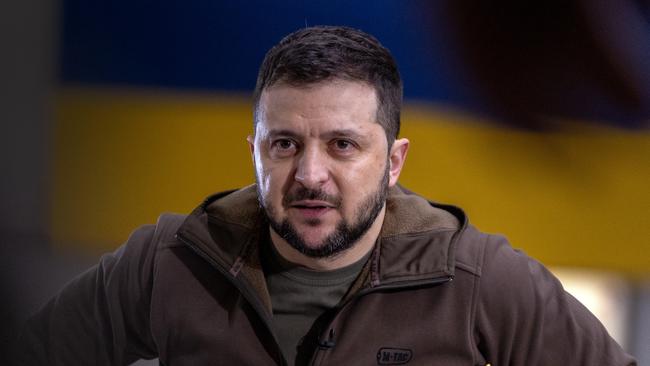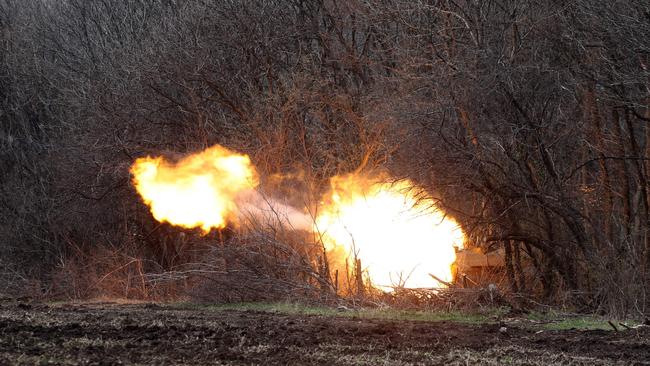Allies aim to blunt Russia’s firepower in Ukraine
The push by the US to send artillery to Ukraine aims to degrade Russian forces – not only on the immediate battlefield but over the longer term.

The push by the US to send artillery to Ukraine aims to degrade Russian forces – not only on the immediate battlefield but over the longer term, according to US Defence Secretary Lloyd Austin and military experts.
The US, France and other allies are sending scores of the long-range howitzers to help Ukraine blunt Russia’s mounting offensive in the eastern Donbas region.
Backed by better air defence, attack drones and Western intelligence, the allies hope that Kyiv will be able to destroy a large amount of Russia’s firepower in the looming showdown.
After returning from Kyiv, where he met Ukraine defence chiefs and President Volodymyr Zelensky at the weekend, Mr Austin said in Poland that Washington’s hopes were larger than that.
Russia “has already lost a lot of military capability, and a lot of its troops, quite frankly. And we want to see them not have the capability to very quickly reproduce that capability,” he said.
“We want to see Russia weakened to the degree that it can’t do the kinds of things that it has done in invading Ukraine.”
That is a shift from Washington’s initial approach, when it simply hoped to help prevent Moscow’s seizure of the Ukrainian capital and the overthrow of Mr Zelensky’s government.
Aided by anti-aircraft and anti-armour missiles supplied by the US and European allies, Ukrainian troops forced the Russian military to withdraw from northern Ukraine within six weeks of the invasion. But Moscow now controls significant swaths of eastern and southern Ukraine, apparently aiming to expand to the centre of the country by sending in more troops and equipment.
Their plan, experts believe, is to use long-range shelling to drive back most of Ukraine’s forces and only then send in ground troops and tanks to secure the land.
Ukraine’s best option is to fight back with superior artillery – backed by protection from air assaults – to destroy Russian firepower, according to Mike Jacobson, a US expert in field artillery.
Mr Jacobson predicted that this would lead to a “war of attrition” in which Ukraine, with ally-supplied equipment with longer ranges and more accurate targeting, could stop the Russians cold.

“I believe that superior artillery will decrease the Russians’ ability to sustain this fight,” he said.
Phillips O’Brien, a University of St Andrews professor of strategic studies who posts daily analyses of the war on Twitter, wrote that the coming artillery fight will resemble World War I, each side trying to wear the other down with gruelling shelling.
The Russian army “is considerably smaller and suffered major equipment losses. Ukrainian army is smaller, but about to be much better armed,” he said.
“Russia needs to change that dynamic or it loses the attrition war.”
The US, with France, the Czech Republic and Canada, are moving fast with the supplies to take advantage of the slow regrouping of Russian forces after their setback in northern Ukraine.
Already at least 18 of the 90 towed artillery pieces Washington promised in the past two weeks have been delivered to Ukrainian forces, and more are being rushed in early this week, according to a Pentagon official.
Washington is also supplying nearly 200,000 rounds of howitzer ammunition, and is arranging for ammunition supplies for the Russian-made artillery that Ukraine forces currently operate.
About 50 Ukraine troops have already been trained to use the US howitzers, and more are being trained this week.
Meanwhile, France is sending its ultra-advanced Caesar mobile howitzer, and the Czech Republic is delivering its older self-propelled howitzers.
Canada too is sending howitzers and advanced, guided “Excalibur” shells that can travel more than 40km and deliver munitions precisely on target.
“The fight they’re in the Donbas is going to be heavily reliant on what we call long-range fires, artillery particularly,” a US defence official said.
“That’s why we’re focusing them on getting them artillery as well as tactical UAVs,” the official said.
That was a reference to allies supplying “suicide drones”, bomb-armed unmanned aerial vehicles that can be directed for hours to search out and then explode themselves on Russian targets.
But no one is saying such a strategy will allow Ukraine to fully drive out the Russians.
If Kyiv does prevail in the artillery showdown, it will “eventually force them (Russia) to either escalate or negotiate realistically,” Mr Jacobson said.
“Russia will be frustrated but not defeated.”
AFP



To join the conversation, please log in. Don't have an account? Register
Join the conversation, you are commenting as Logout